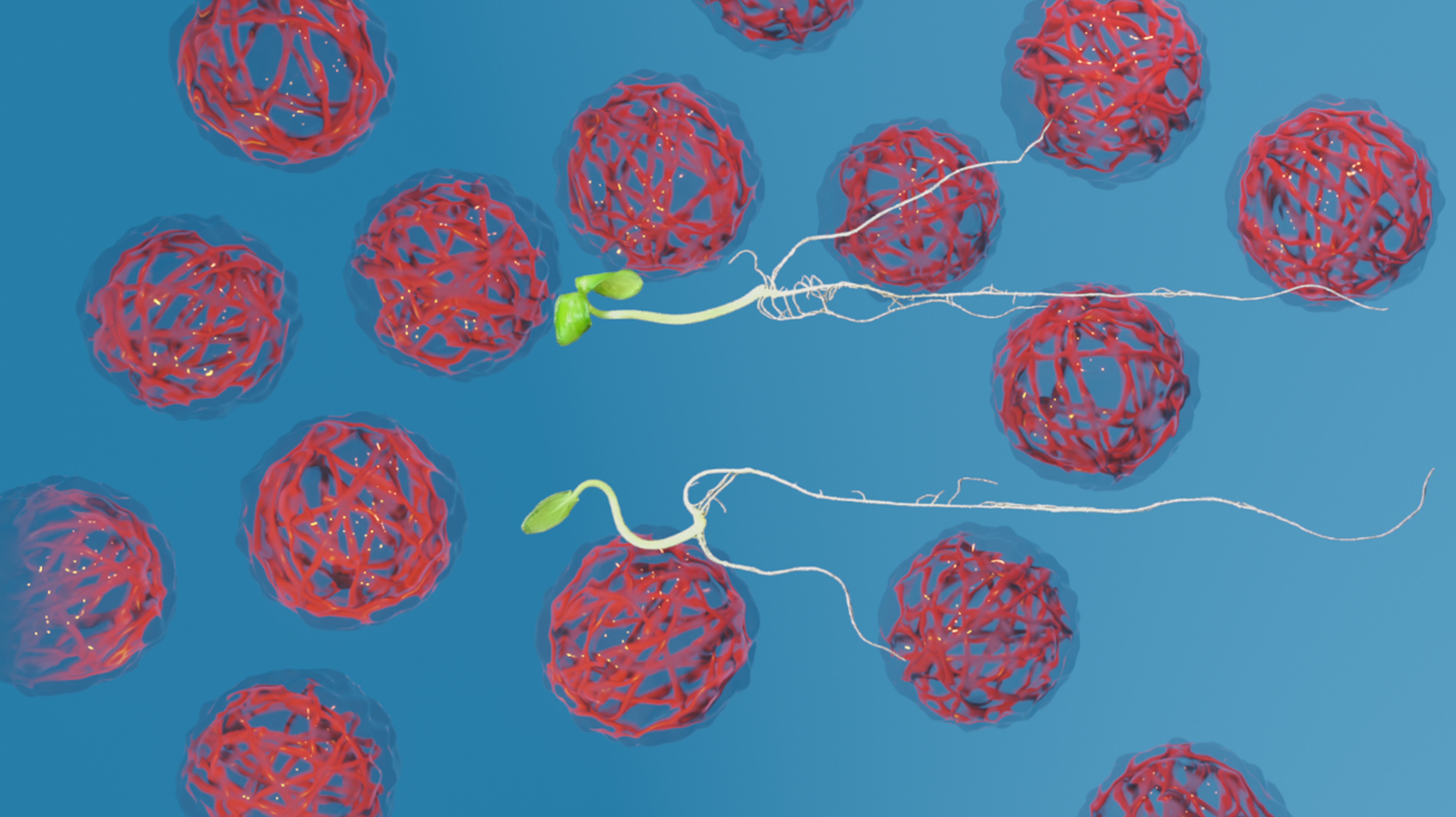


Cucumber seeds germinating in microgels (photo: Eduardo Molina)
Published on 01/20/2025
By Thais Szegö | Agência FAPESP – Experiments conducted by researchers at the University of Franca (UNIFRAN) in São Paulo state, Brazil, have confirmed the effectiveness of using microgels and nanogels containing iron to enhance cucumber seed germination.
Researchers affiliated with the Brazilian Synchrotron Light Laboratory (LNLS), part of the Brazilian Center for Research in Energy and Materials (CNPEM), and with the University of São Paulo’s Center for Nuclear Energy in Agriculture (CENA-USP), collaborated with the UNIFRAN team.
Microgels and nanogels are polymer colloid particles with an internal structure similar to that of a gel in that they swell when exposed to a solvent, and ranging in size from a few micrometers (microgels) to nanometers (nanogels). Polymeric systems are used in various forms in agriculture, especially for the controlled release of agrochemicals and as water uptake-inducing compounds.
The researchers focused on cucumber seeds (Cucumis sativus) because of the crop’s prominent position among globally cultivated and consumed vegetables. Cucumber is widely used as a model for agricultural studies and is the world’s fourth most grown vegetable, superseded only by tomato, cabbage and onion.
In the study, the researchers compared treatment of cucumber seeds with pure polymers and pure water. They also compared treatment with polymers containing iron and an iron-water solution.
The results, reported in an article published in the Journal of Agricultural and Food Chemistry, showed that the polymers, both pure and containing iron, stimulated seed germination and plant growth. “Furthermore, the nanogel with iron led to a higher concentration of iron in certain cellular regions of the seed [e.g. embryo and cotyledon], as confirmed by X-ray fluorescence. This enhanced root and shoot development,” said Eduardo Molina, last author of the article. A professor and researcher at UNIFRAN, Molina has a degree in industrial chemistry and a master’s and PhD in chemistry. He coordinated the study, which was supported by FAPESP.
Safety testing
The polymers were tested for toxicity by exposing zebrafish to them for 96 hours with negative results, showing the material to be safe for aquatic organisms. According to the researchers, the findings evidence the benefits of the method for cucumber plant development and potentially for agriculture generally, with no risk of harming the environment.
“The results obtained so far are promising but involved only laboratory-scale testing under controlled conditions in terms of temperature, humidity and exposure to light. Next, we plan to validate the method for other crops, and seek partners for experiments on a larger scale,” Molina said.
In future stages of the research, he added, the team will also evaluate the effects of seed treatment not just on germination but on the entire process of plant growth and development. “We also want to use the microgel as a controlled release system for leaf nutrition,” he said.
These next steps in the project will produce innovations that will be highly useful to farmers, given the findings of other scientists showing that this type of treatment can promote significant restoration of green pigment in iron-deficient cucumbers. Iron is of course essential to crop growth and development, with no adverse side effects.
In recent years, microgels have been increasingly used in agriculture to enhance plant health and food crop yields. They contribute to the production of more and better vegetables, at faster speeds, in less space, and for a lower cost. “They can therefore help meet the steadily growing demand for sustainable produced food to feed the world population, which is also continuously growing,” Molina said.
The article “Facilitating seed iron uptake through amine-epoxide microgels: a novel approach to enhance cucumber (Cucumis sativus) germination” is at: pubs.acs.org/doi/10.1021/acs.jafc.4c01522.
Source: https://agencia.fapesp.br/53736